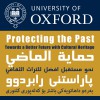Monitoring, Protecting, and Preserving Cultural Heritage: Recent Results of the ASOR Cultural Heritage Initiatives (English)
The armed conflict that began in Syria in 2011 has produced a catastrophic humanitarian crisis. In 2014 the regional nature of the situation escalated, beginning with the take-over of Mosul by ISIL, followed by their subsequent gains in northern Iraq. In Syria alone, combat has reached every region, with nearly a third of the population internally displaced and more than four million have left the country as refugees. These war-wearied Syrians and Iraqis are struggling with a loss of identity and a lack of control over their lives, and these feelings are further compounded by the destruction of their as a result of the ongoing conflict. Thousands of cultural properties have been damaged through combat-related incidents, theft, and intentional destruction. This paper examines the impact of the conflict on the protection of cultural property by discussing the activities and outcomes of the Cultural Heritage Initiatives (CHI) project, a cooperative agreement between the US Department of State and the American Schools of Oriental Research (ASOR).
CHI activities include gathering and archiving information about the condition of cultural heritage from online media, satellite imagery, and in-country sources. Working collaboratively with other groups and agencies, CHI has compiled lists of heritage resources to create an inventory and map of heritage assets in both countries. This information is used to complete remote condition assessments to help better understand patterns of damage and preservation needs, and subsequently these assessments will be critical for prioritizing on-the-ground conservation activities in the initial post-conflict recovery period.
Overall, through a wide range of activities, CHI documents the impact of the war on cultural heritage and plans preservation actions for the future. This discussion of the CHI project illustrates the challenges of protecting cultural heritage during armed conflict and considers responses that engage local stakeholders. Ultimately CHI seeks to develop best practices for cultural property protection.




